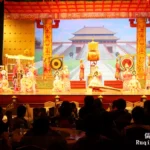In this guide, we’ll explore the architecture of Siheyuan and Hutongs in Beijing, from their historical origins to their unique design features, and how you can experience them during your visit.
Beijing, the heart of China, is famous for its rich history and traditional architecture. Among the most iconic examples of this architectural heritage are Siheyuan (traditional courtyard homes) and Hutongs (narrow alleys that connect these homes).
Together, they form the backbone of old Beijing neighborhoods, representing a way of life that has endured for centuries.
What Are Siheyuan and Hutongs?
To understand the architecture of Siheyuan and Hutongs in Beijing, it’s essential to know what they are. A Siheyuan is a traditional courtyard residence, typically a one-story building surrounding an open courtyard. These homes are arranged symmetrically, reflecting harmony and balance—principles rooted in Chinese culture.
Shichahai (Houhai ) and Qianmen Area are the two main areas where the old hutongs and Siheyuan are located ( see the Google Map below):
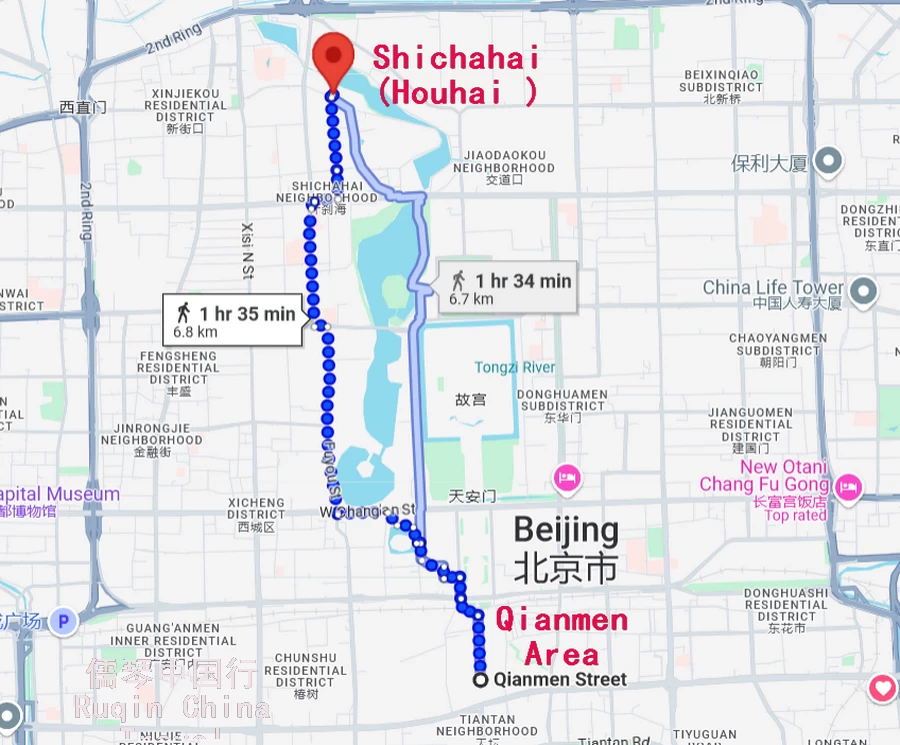
Hutongs are the narrow lanes and alleys that connect Siheyuan homes, creating a maze-like network across old Beijing. Together, they form communities where families have lived for generations, sharing daily routines and festivities.
The History of Siheyuan and Hutongs
The architecture of Siheyuan and Hutongs in Beijing dates back over 700 years, originating during the Yuan Dynasty (1279–1368). However, their design became more refined and widespread in the Ming (1368–1644) and Qing (1644–1912) Dynasties.
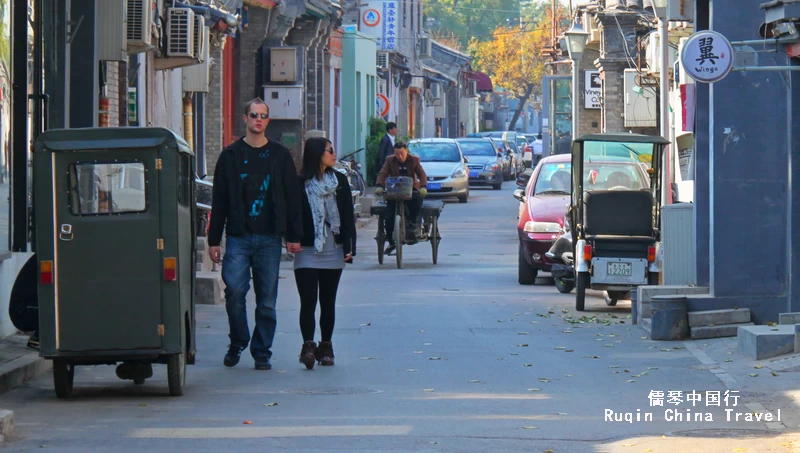
During these periods, Beijing was the imperial capital, and Siheyuan became the standard home design for officials, merchants, and families. T
he arrangement of Hutongs also followed strict planning rules, with wide alleys leading to narrower lanes, creating a sense of order and hierarchy. Over time, these homes and alleys became iconic symbols of Beijing’s urban layout.
The Design and Layout of Siheyuan
The architecture of Siheyuan and Hutongs in Beijing is characterized by symmetry and balance. Each Siheyuan has a rectangular layout, with rooms built around a central courtyard. Typically, the main house faces south, allowing maximum sunlight to enter. The other buildings are positioned on the east, west, and north sides, forming a closed loop. This arrangement not only promotes privacy but also helps regulate temperature by blocking wind and maintaining shade. Inside the courtyard, you’ll often find small gardens, decorative stones, and potted plants, creating a peaceful and harmonious space.
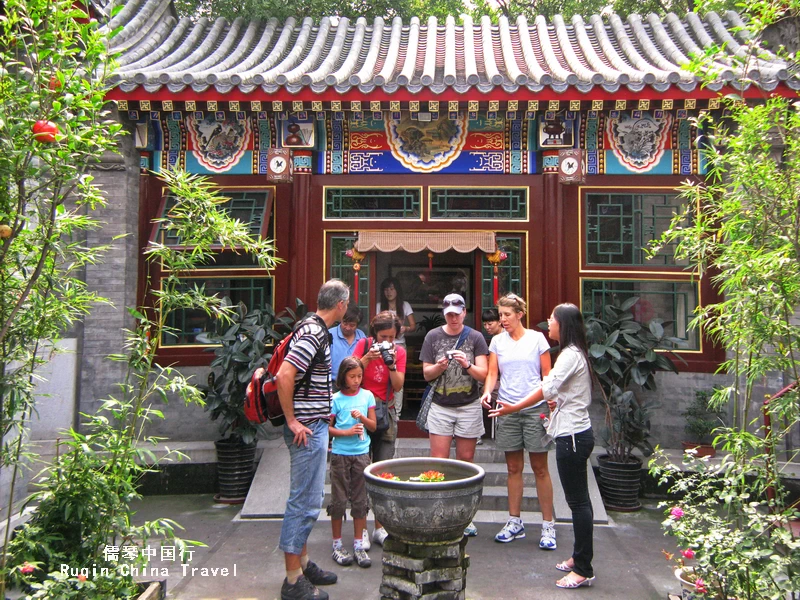
Each part of a Siheyuan serves a specific purpose. The main house, facing south, is where the head of the family resides. The eastern and western wings are for other family members, while the northern building often serves as a guest room or storage area. This design reflects traditional Chinese values, emphasizing family hierarchy, respect, and togetherness. The simplicity of the layout, combined with the use of natural materials like wood and stone, gives Siheyuan their timeless appeal.
The Significance of Hutongs
Hutongs play a crucial role in the architecture of Siheyuan and Hutongs in Beijing. These alleys are more than just paths connecting homes—they are social spaces where life unfolds. In the past, Hutongs served as vibrant community centers where neighbors gathered, children played, and local vendors sold their goods. Each Hutong has its own name, often reflecting its history, a local landmark, or a unique feature of the area. For example, “Nanluoguxiang” is a popular Hutong known for its lively shops and cafes.
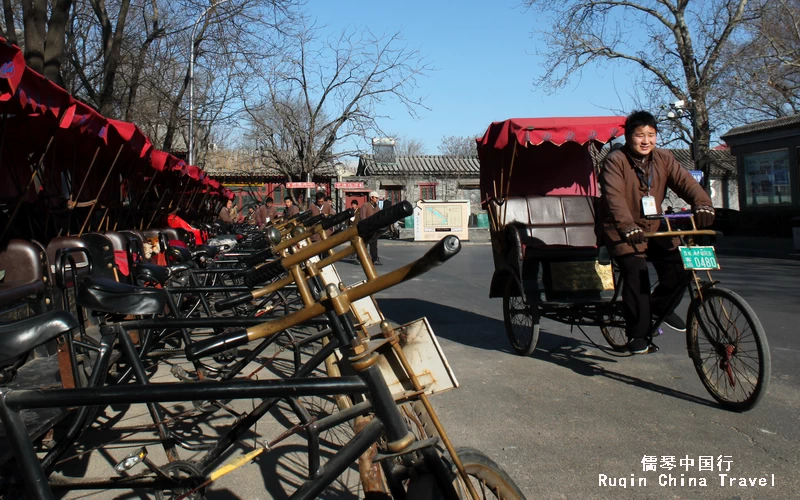
Unlike the strict formality of Siheyuan, Hutongs have a more organic, flexible layout. They vary in width and length, creating a sense of intimacy and surprise. Walking through Hutongs gives visitors a glimpse of old Beijing, where the rhythm of daily life continues much as it has for centuries. However, many Hutongs have been replaced by modern buildings, making it important to preserve those that remain as cultural treasures.
How Siheyuan Reflect Chinese Culture
The architecture of Siheyuan and Hutongs in Beijing embodies traditional Chinese principles of harmony, balance, and family unity. The design of a Siheyuan is deeply influenced by feng shui, the ancient practice of arranging spaces to create positive energy flow. For example, the south-facing orientation of the main house allows sunlight to fill the rooms, which is believed to bring warmth and prosperity. Similarly, the enclosed layout creates a sense of protection and stability, shielding the family from external disturbances.
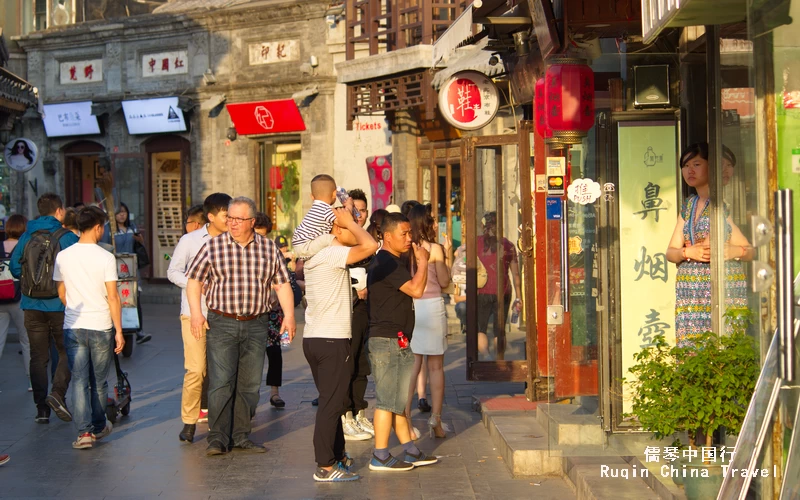
In addition to feng shui, Siheyuan also reflect Confucian values, especially the emphasis on family and social hierarchy. The placement of rooms indicates the family structure, with the eldest members occupying the most prominent positions. This arrangement fosters respect and order, two key aspects of Confucian thought. The courtyard itself is a symbol of openness and connection, encouraging gatherings and shared experiences.
Modern Changes and Preservation Efforts
Today, the architecture of Siheyuan and Hutongs in Beijing faces challenges due to rapid urbanization. Many traditional neighborhoods have been demolished to make way for new developments. However, there are efforts to preserve and restore these cultural icons. Areas like Qianmen and Nanluoguxiang have seen renovations aimed at maintaining the original character of Hutongs while introducing modern conveniences. These projects focus on repairing structures, preserving historical details, and promoting tourism.
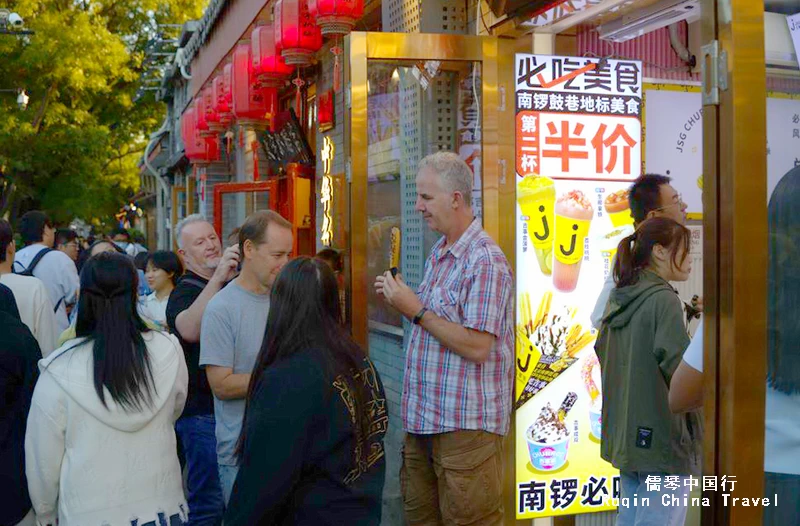
Despite these efforts, some of the authentic atmosphere of old Hutong life has been lost. Tourists will find that certain neighborhoods are more commercialized, catering to shops, cafes, and souvenir stands. Nonetheless, there are still many hidden alleys where you can see authentic Siheyuan homes and experience local life. Organizations and residents continue to advocate for the preservation of these traditional areas, emphasizing their cultural and historical value.
Experiencing Siheyuan and Hutongs During Your Visit
When visiting Beijing, exploring the architecture of Siheyuan and Hutongs is a must. To truly appreciate their charm, consider joining a guided tour. Many tours will take you through lesser-known Hutongs, where you can visit well-preserved Siheyuan homes and learn about their history and architecture. You may also have the chance to meet local residents who can share stories of life in these traditional neighborhoods.
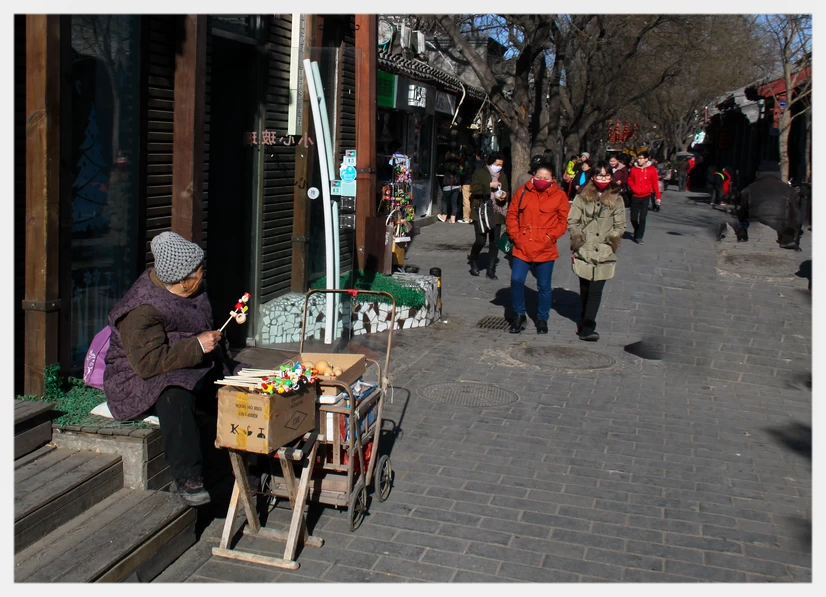
Another way to experience Siheyuan is by staying in a converted courtyard hotel. Many Siheyuan have been transformed into boutique accommodations, offering a blend of traditional charm and modern comfort. Staying in one of these homes provides a unique opportunity to feel the ambiance of old Beijing. Additionally, some Siheyuan have been turned into cultural centers, where you can participate in activities like tea ceremonies, calligraphy classes, or cooking workshops.
Famous Hutongs and Siheyuan to Explore
For those eager to explore the architecture of Siheyuan and Hutongs in Beijing, several locations stand out. Nanluoguxiang is one of the most famous Hutongs, known for its blend of traditional and trendy shops. Here, you can wander through narrow lanes, stopping at cafes, galleries, and craft stores. Yandaixiejie is another popular alley, characterized by its traditional architecture and historic vibe.
For a quieter experience, head to Dongsi or Bada Hutong, where you can explore peaceful alleys that retain much of their original charm. If you wish to see a well-preserved Siheyuan, visit the Prince Gong Mansion or the Beijing Hutong Museum, both of which showcase the elegance and design of these traditional homes. These locations provide a deeper insight into how people lived in Beijing centuries ago.
Why Preserving Hutongs and Siheyuan Matters
The architecture of Siheyuan and Hutongs in Beijing is not just about buildings; it’s about preserving a way of life. These neighborhoods represent the social fabric of Beijing, where close-knit communities thrived. By preserving them, we keep alive the history, culture, and memories of generations. Efforts to restore and protect these areas also promote sustainable tourism, allowing visitors to experience the authentic charm of old Beijing without overwhelming the local environment.
While many cities have lost their historical neighborhoods, Beijing still offers glimpses of its past through its Hutongs and Siheyuan. These efforts serve as a reminder of the importance of cultural preservation in a rapidly changing world. When visiting, you play a part in supporting this heritage by choosing responsible tourism options and appreciating the intricate details that make these areas special.
The architecture of Siheyuan and Hutongs in Beijing is a testament to the city’s rich cultural heritage. These traditional homes and alleys are more than just architectural structures; they are symbols of family, community, and a way of life that has endured for centuries. Whether you’re wandering through a quiet Hutong or exploring a beautifully restored Siheyuan, you’ll find that these spaces offer a unique glimpse into the heart of Beijing. By understanding their history, design, and significance, you’ll gain a deeper appreciation for this iconic part of Chinese culture. So, on your next trip to Beijing, don’t just see the sights—take time to explore the Hutongs and Siheyuan, where history and tradition come to life.
Further Reading
Hutongs: Where to Go to See Them
A Complete Guide to Nanluoguxiang in Beijing
How to Visit Shichahai – A Complete Guide

